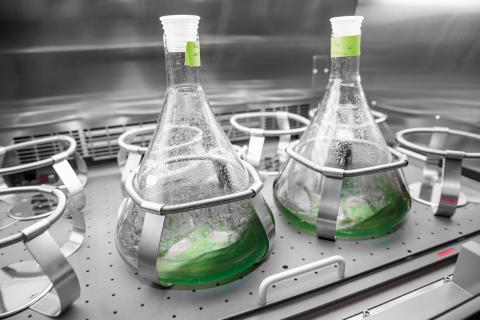E-fuel is a neutral fuel in carbon dioxide emissions that is obtained from hydrogen. The motors do not require modifications for use.
We are currently immersed in a transition process as far as mobility is concerned, which should lead to a completely carbon-neutral way of moving around in a few years. In this process, the electric car comes into play, but also other alternatives. One of them is e-fuel: we explain what it is and when it will arrive in Spain.
The European Union wants to put an end to dependence on oil, which is why it has approved a ban on selling new combustion cars from 2035. One of the solutions to achieve this is through the electrification of the automobile, although not the only one.
Electric car development has accelerated in recent years, but the automotive industry is exploring other avenues to achieve the ultimate goal of moving away from fossil fuels, such as the hydrogen fuel cell and, more recently, e-fuels. synthetics.
What is e-fuel
E-fuel is a neutral fuel in carbon dioxide (CO2) emissions that is obtained from hydrogen. It is considered a sustainable fuel because, for its production, carbon dioxide captured directly from the atmosphere, water and energy obtained from renewable sources such as wind and solar are used.
Once the e-fuel is consumed in a combustion engine, the same emissions captured for the production of the fuel are generated, hence the neutral balance in CO2, because no more greenhouse gases are expelled than it has been necessary to capture from the atmosphere for its creation.
In addition, unlike biofuels (another of the alternatives on the table), synthetic fuel is not obtained using raw materials that could be used as a source of human food, which does not make it direct competition and does not favor speculation or the price of these foods.
Its origin is found in essential elements on earth, such as oxygen, hydrogen and carbon dioxide. Electrical energy is also needed, which is obtained from clean sources, and a chemical and physical process is sufficient for the production of synthetic fuel.
Once the e-fuel is produced, it can be used in internal combustion engines without any type of modification required, so its operation is identical to that of gasoline and diesel derived from petroleum. In addition, e-fuel is in a liquid state, so refueling and transport is carried out in the same way as fossil fuels.
When will e-fuel reach cars in Spain?
It is difficult to give an accurate answer to this question, but there are already several companies immersed in the development of e-fuel and the European Union has incorporated it into the energy package that can be used from 2035, at the request of Germany, which led an alliance so that carbon neutral fuels could be used.
This has been key to unlocking the ban on new combustion vehicles in 2035. So, by that date, we should already see synthetic gasoline in service stations throughout Spain and maybe even before 2035.
One of the companies that is working the most on the development of synthetic fuels is Porsche. Others like Audi, Lamborghini or Mazda also see e-fuel as an option for the future with the possibility of lasting over time, which would prevent the disappearance of the combustion engine as we know it.
However, it should be stressed that the development of e-fuel is still in its infancy. As we have just said, one of the manufacturers that is betting the most on synthetic fuel is Porsche, although the German brand is committed to electromobility and wants 80% of its sales to be electric cars by 2030.
Porsche already has its Haru Oni pilot plant operating in Punta Arenas (Chile), where it has produced 130,000 liters of e-fuel per year since 2020. By 2024, it expects to reach 55 million liters and, in 2026, 550 million.
The 130,000 liters of e-fuel produced annually at Haru Oni will be used in the Porsche Mobil 1 Supercup, as well as in the test vehicles at the Porsche Experience Center
One problem: the price
So far, everything related to e-fuel seems quite positive. However, it is possible that there is a major drawback that makes it a product within the reach of few: its price.
Recently, a study by the International Council on Clean Transportation (ICCT) indicated that a liter of synthetic fuel will cost around 2.80 euros in 2030, that is, approximately 50% more expensive than conventional fuel. current price of gasoline.
This means that filling an average 50-liter tank would cost 140 euros, according to a Transport & Environment study, something completely unfeasible for most consumers.
The reason for its high cost is the enormous amount of energy used to produce it and the need to import it from abroad. However, the eFuel Alliance, made up of different companies related to the transport sector, calculates that the price of e-fuel will decrease over the years until it becomes cheaper than traditional gasoline.













